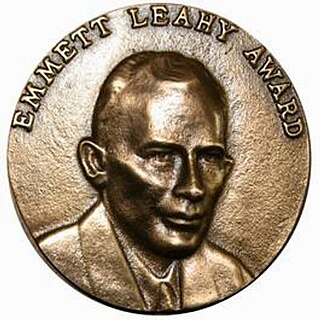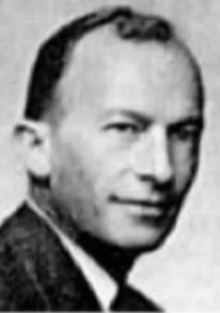Career
Adrian Brown was born in 1969 in London, England. He attended Durham University, and in 1991 graduated with a BA in Medieval Literature. He became a professional archaeological excavator, and participated in several projects at sites in the United Kingdom. In 1994 he joined the English Heritage Centre for Archaeology in Portsmouth as an assistant records manager. He was promoted to information manager and then to head of information management and collections. He became involved in the field of long-term digital preservation, and in 2000 published a digital archiving strategy for English Heritage, which he used as the basis for developing the digital archiving infrastructure for the agency. This included a registry of digital formats, and processes for automatically characterizing records at time of ingest, including format identification, metadata extraction and fixity checking. It also supported migration from one format to another.
In 2002 Brown moved to The National Archives (TNA) as a digital archives analyst in the Digital Preservation Department. He developed the digital repository for TNA based on the work he had done for English Heritage. He led the development of the PRONOM file format registry and the associated DROID (Digital Record Object IDentification) software tool. PRONOM and DROID were made freely available, and are used by the main open source and commercial digital repository systems worldwide.
In 2003 Brown established the UK Government Web Archive. As of 2016 the Web Archive held more than one billion archived web pages. It was accessed by about 20 million users monthly. Brown was promoted to head of digital preservation in 2005, with responsibility for preserving digital records of the government and courts of the United Kingdom over the long term.
Brown left TNA in 2009 and joined the Parliamentary Archives as head of preservation and access. He became director of Parliamentary Archives in 2013. He developed a new digital repository for the Archives to preserve the records created in digital format, including web pages, and to make them freely available to the public. He also launched a program to digitize and preserve paper records.

Digitization is the process of converting information into a digital format. The result is the representation of an object, image, sound, document, or signal obtained by generating a series of numbers that describe a discrete set of points or samples. The result is called digital representation or, more specifically, a digital image, for the object, and digital form, for the signal. In modern practice, the digitized data is in the form of binary numbers, which facilitates processing by digital computers and other operations, but digitizing simply means "the conversion of analog source material into a numerical format"; the decimal or any other number system can be used instead.

Digital obsolescence is the risk of data loss because of inabilities to access digital assets, due to the hardware or software required for information retrieval being repeatedly replaced by newer devices and systems, resulting in increasingly incompatible formats. While the threat of an eventual "digital dark age" was initially met with little concern until the 1990s, modern digital preservation efforts in the information and archival fields have implemented protocols and strategies such as data migration and technical audits, while the salvage and emulation of antiquated hardware and software address digital obsolescence to limit the potential damage to long-term information access.
Hybrid library is a term used by librarians to describe libraries containing a mix of traditional print library resources and the growing number of electronic resources.
In library and archival science, digital preservation is a formal endeavor to ensure that digital information of continuing value remains accessible and usable. It involves planning, resource allocation, and application of preservation methods and technologies, and it combines policies, strategies and actions to ensure access to reformatted and "born-digital" content, regardless of the challenges of media failure and technological change. The goal of digital preservation is the accurate rendering of authenticated content over time. The Association for Library Collections and Technical Services Preservation and Reformatting Section of the American Library Association, defined digital preservation as combination of "policies, strategies and actions that ensure access to digital content over time." According to the Harrod's Librarian Glossary, digital preservation is the method of keeping digital material alive so that they remain usable as technological advances render original hardware and software specification obsolete.

Archival science, or archival studies, is the study and theory of building and curating archives, which are collections of documents, recordings and data storage devices.
PRONOM is a web-based technical registry to support digital preservation services, developed by The National Archives of the United Kingdom. PRONOM was the first and remains, to date, the only operational public file format registry in the world, although the "Magic File" repository of the File Command has served this role in a less formal capacity for two decades. Other projects to develop technical registries, including the UK Digital Curation Centre's Representation Information Registry, and the Global Digital Format Registry project at Harvard University, are now in progress.
The Digital Curation Centre (DCC) was established to help solve the extensive challenges of digital preservation and digital curation and to lead research, development, advice, and support services for higher education institutions in the United Kingdom.
Charles M. Dollar, an internationally recognized expert on the life cycle management of electronic records, particularly electronic records archiving, pioneered research into digital preservation of electronic records.
The conservation and restoration of new media art is the study and practice of techniques for sustaining new media art created using from materials such as digital, biological, performative, and other variable media.
Oral history preservation is the field that deals with the care and upkeep of oral history materials, whatever format they may be in. Oral history is a method of historical documentation, using interviews with living survivors of the time being investigated. Oral history often touches on topics scarcely touched on by written documents, and by doing so, fills in the gaps of records that make up early historical documents.
The Digital Preservation Award is an international award sponsored by the Digital Preservation Coalition. The award 'recognises the many new initiatives being undertaken in the challenging field of digital preservation'. It was inaugurated in 2004. It was initially presented as part of the Institute of ConservationConservation Awards. Since 2012 the prize is presented independently. The prize includes a trophy and a cheque. Awards ceremonies have taken place at the British Library, the British Museum and the Wellcome Trust.
Digital curation is the selection, preservation, maintenance, collection and archiving of digital assets. Digital curation establishes, maintains and adds value to repositories of digital data for present and future use. This is often accomplished by archivists, librarians, scientists, historians, and scholars. Enterprises are starting to use digital curation to improve the quality of information and data within their operational and strategic processes. Successful digital curation will mitigate digital obsolescence, keeping the information accessible to users indefinitely. Digital curation includes digital asset management, data curation, digital preservation, and electronic records management.
PREservation Metadata: Implementation Strategies (PREMIS) is the de facto digital preservation metadata standard.

Records life-cycle in records management refers to the following stages of a records "life span": from its creation to its preservation or disposal. While various models of the records life-cycle exist, they all feature creation or receipt, use, and disposition.
Database preservation usually involves converting the information stored in a database to a form likely to be accessible in the long term as technology changes, without losing the initial characteristics of the data.

The Emmett Leahy Award is given annually to individuals who have had major impact on the field of information management. The award has been given since 1967, and honors Emmett Leahy, a pioneer in records management.

Emmett Joseph Leahy was an American archivist and entrepreneur. He was a pioneer in the discipline of records management. After working in the National Archives and then during World War II in the United States Navy, he entered private business as a consultant in records management and as a records storage provider. He also participated in the two Hoover Commissions in improving the efficiency and effectiveness of government.
Kenneth Francis Thibodeau is an American specialist in electronic records management who worked for many years at the National Archives and Records Administration (NARA). He was responsible for development of the pioneering DoD 5015.03 standard for electronic records management and for creation of NARA's Electronic Records Archives System (ERA).
Adrian Cunnningham is an Australian archivist who worked for many years at the National Archives of Australia. He is known for his contributions to the practice of digital records management, including development of international standards in this field.





